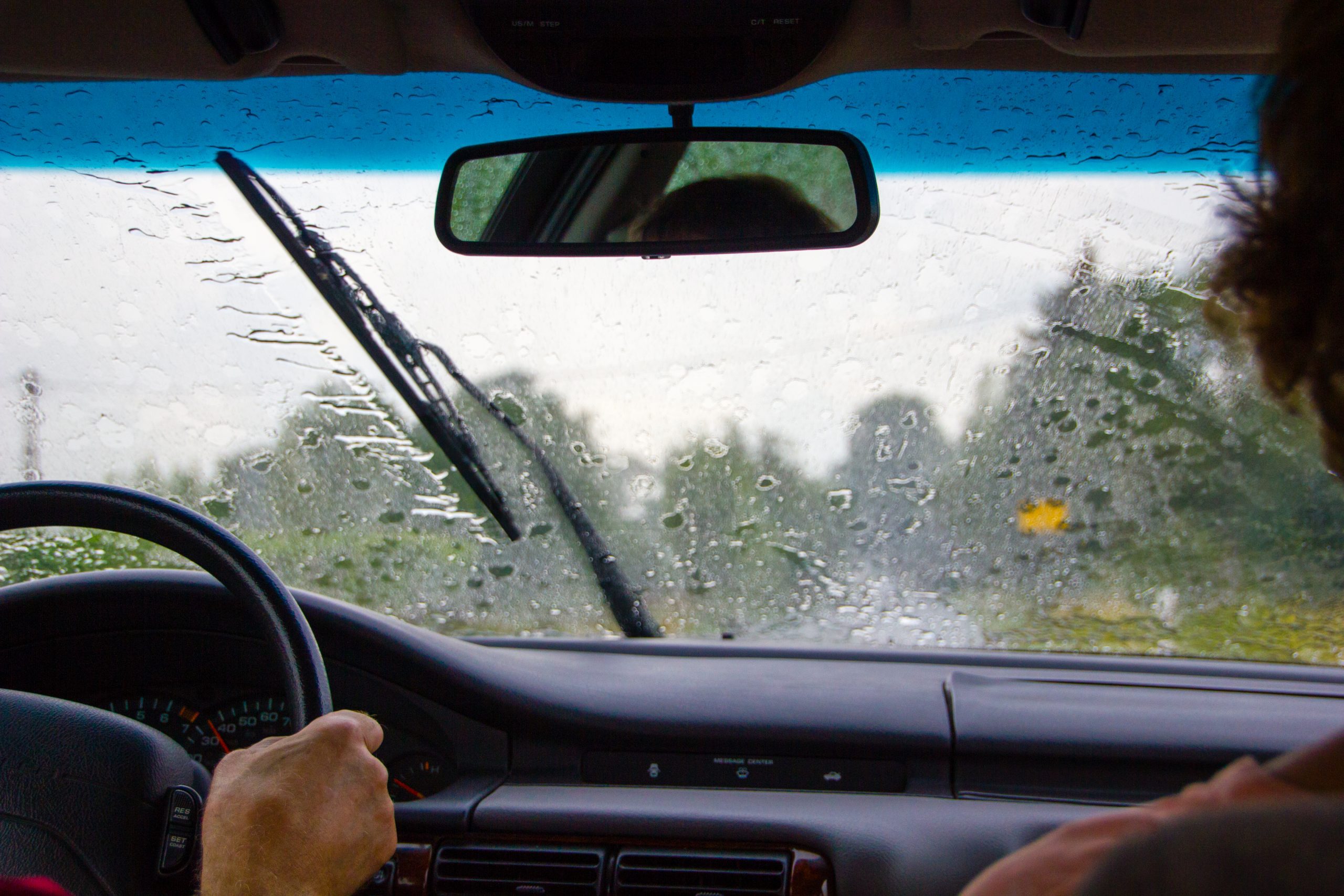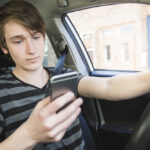7 Tips For Driving in the Rain

With the most extreme winter weather behind us, you might be feeling confident in hitting the road with less worry. However, with spring and summer showers still in the forecast, you want to be careful not to let your guard down.
Many drivers are surprised to hear just how dangerous it can be to drive in the rain. But in fact, the U.S. Department of Transportation reports that wet pavement accounts for 70% of weather-related vehicle crashes, 78% of the crash injuries, and 76% of the weather-related fatalities. It’s easy to see why you need to be extra careful when the drops fall.
Here are seven tips to help you drive safer when it rains.
1. Make sure your car is in good working order.
If you haven’t had a tune-up lately, it might be a good idea to have a professional mechanic check out your car. Start with your brakes, which might have been overworked during the long winter and therefore not perform as you need them to. Then check the tires, as worn tread offers less traction, which means you are more likely to hydroplane. In that situation, your tires lose contact with the road, which causes you to lose control of your speed, brakes, and steering. (If you do get stuck hydroplaning, don’t panic and hit the brakes; instead let up on the accelerator and follow the skid, rather than trying to turn.)
Then double-check your headlights and taillights and replace your windshield wipers if you haven’t done so recently. It’s a good idea to swap out new ones every six months or so, and they could be especially sluggish after a long winter. Dull windshield wipers won’t effectively clear rain or dirt off the window, which can obscure your vision. Also make sure you have ample windshield wiper fluid, should you need extra to clear your vision.
2. Leave extra room between your car and others.
Remember that wet conditions affect your braking distance. Since it takes longer to stop the car when the pavement is slick, leave more following room than you normally would; if your normal following distance is three seconds, increase that to four or five in the rain.
Not sure how to calculate following distance? Choose a stationary object, like a road sign or building. When the car in front of you passes it, start counting until your car passes the same object. Count like this, “1 one thousand, 2 one thousand, 3 one thousand.”
3. Don’t drive through standing water.
Whether you’re dealing with melting snow or pelting rain, it’s easy for drains to become maxxed out, leaving pools of standing water on the road. Avoid the puddle if you can; if there’s no way to safely switch lanes, at least drive through it very slowly so you don’t slide.
Puddles can be deceptively deep or they may be hiding debris, like nails or broken glass that can harm your tires, or even a pothole that can send you flying. Speeding through standing water can cause you to lose control of your car’s handling, so proceed cautiously when you see pooling water.
Driving near the middle of the road, rather than hugging the edges, also reduces your exposure to standing water since roads are designed to drain to the sides. If you do have to go through a puddle, tap the brakes a couple of times once you’re out to make sure that they are still functioning.
4. Be cautious about splashing on your windshield.
That standing water you just drove slowly through? Unfortunately not everyone is as thoughtful as you, and if a careless driver careens through it at top speed, it could splash up, obscuring your vision. If that happens, get your windshield wipers working enough to pilot the car to a safe spot until you can properly clean your windows.
5. Avoid using cruise control.
It might feel like cruise control will keep you steadier should something happen, but instead it could cause your car to speed up if you hydroplane. It also tends to make you less cautious and aware, and you don’t need any distractions when driving in the rain. Keep those feet on the pedals and your eyes continuously scanning the road for hazards.
6. Slow down.
While admittedly always good advice, it can be even more important in the rain, when visibility can be hampered and your vehicle’s reaction time is slower. You want to make sure you don’t inadvertently hit a pedestrian, bike, or another car.
7. Or…stop.
If the rain is completely obscuring your windshield, you’ll want to pull over in a safe place if you can until the worst of it clears.
Pack your patience and drive slowly and carefully.
But if you do have an accident (they happen!) make sure you’re adequately covered. Contact Matic today to double-check you’ve got the right policy for your situation, rain or shine.



